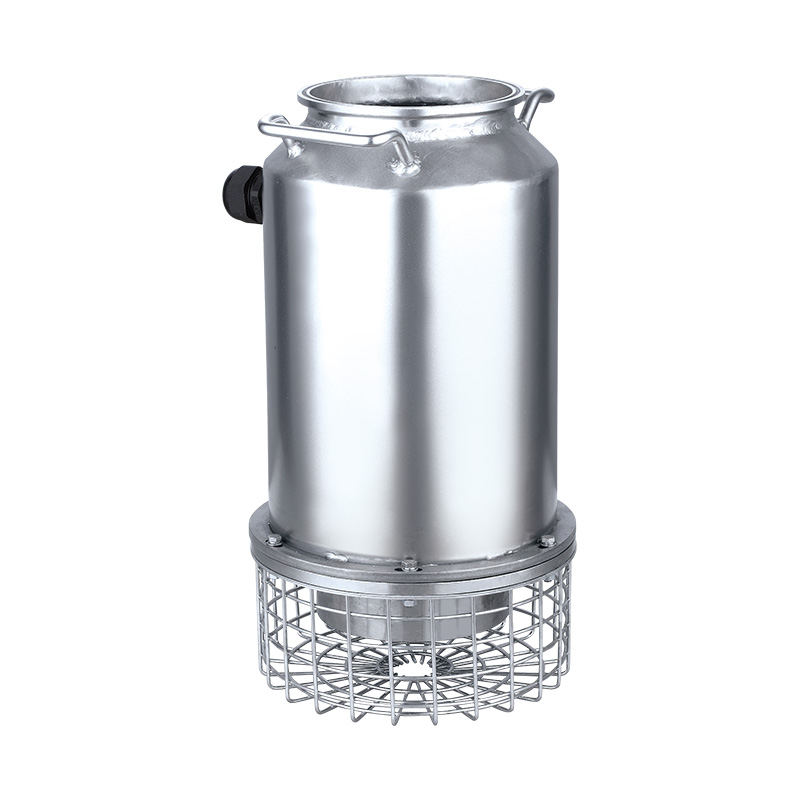One of the frequently encountered problems in industrial heavy duty submersible water pumps is motor failure. The motor, submerged along with the pump, operates under harsh conditions and is susceptible to overheating and electrical faults. Motor failure may occur due to inadequate cooling, insulation breakdown, or water ingress.

The design of industrial heavy duty submersible water pumps typically includes a sealed motor housing with cooling passages filled with insulating oil or water to prevent overheating. However, if seals degrade over time or are damaged during installation or operation, water can enter the motor compartment, causing electrical short circuits or corrosion.
Preventive measures include regular inspection of seals and insulation resistance testing. Monitoring motor temperature and vibration levels can provide early warning signs of motor distress. Using a pump equipped with thermal overload protection can also prevent damage due to overheating.
Seal leakage is another common issue affecting industrial heavy duty submersible water pumps. Mechanical seals are used to separate the wet pump section from the motor compartment, preventing water from entering the motor. Over time, wear, debris, or improper installation can seal failure.
When the seal fails, water ingress can damage the motor windings and bearings, pump downtime. Industrial heavy duty submersible water pumps operating in abrasive or contaminated water environments are particularly prone to seal wear.
Regular maintenance and use of high-quality seals designed for specific operating conditions are essential. Some pumps feature dual-seal arrangements or sealing systems that use barrier fluids to enhance protection. Proper installation techniques and ensuring the pump operates within its design parameters also help maintain seal integrity.
Impeller issues, such as blockage or wear, commonly affect industrial heavy duty submersible water pumps, especially when pumping water containing solids, sludge, or fibrous materials. Blockage reduces pump efficiency and may cause vibrations or excessive load on the motor.
The impeller is designed to handle certain solids sizes, but exceeding these limits or encountering large debris can cause clogging. Wear over time can alter the impeller geometry, decreasing hydraulic efficiency and flow rate.
To address this, industrial heavy duty submersible water pumps often use open or semi-open impellers that allow solids to pass through. Routine inspection and cleaning, as well as installing screens or filters upstream, help prevent blockage. Selecting pumps with wear-resistant materials such as hardened stainless steel or coated components also extends impeller life.
Electrical cables connected to industrial heavy duty submersible water pumps must withstand underwater conditions, mechanical stresses, and chemical exposure. Cable insulation damage or poor connections can cause electrical faults or intermittent operation.
Mechanical stress from movement, abrasion against rough surfaces, or sharp bends may damage the cable. Additionally, water ingress at cable joints or connectors can short circuits.
Using high-quality, water-resistant cables and proper cable management systems reduces risk. Ensuring connectors and joints are sealed according to standards, and performing regular electrical continuity and insulation tests, helps maintain reliable power delivery.
Overheating is a significant concern for industrial heavy duty submersible water pumps, especially if the pump runs dry or if cooling water is insufficient. Since the pump and motor are submerged, water provides cooling; without it, the motor temperature can rise quickly, damaging internal components.
Dry running occurs when the pump operates without adequate water, often due to incorrect installation or supply failure. Many pumps are equipped with thermal protection devices that shut down the motor in overheating conditions to prevent damage.
Operators should ensure the pump is installed correctly with proper water supply and flow conditions. Implementing sensors for flow and temperature monitoring can detect dry running or overheating and trigger alarms or shutdowns.